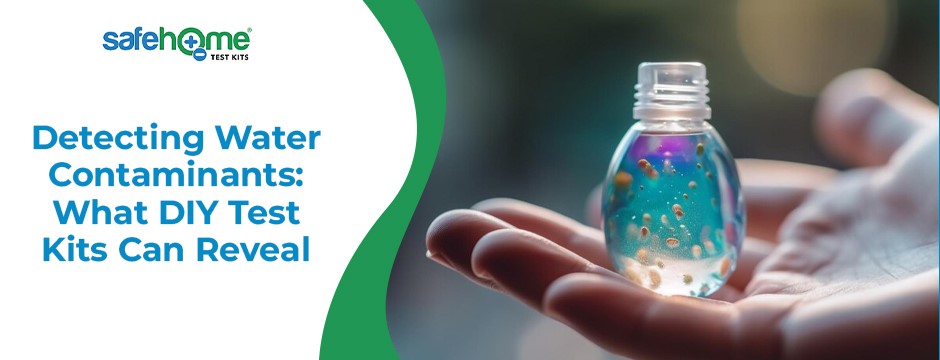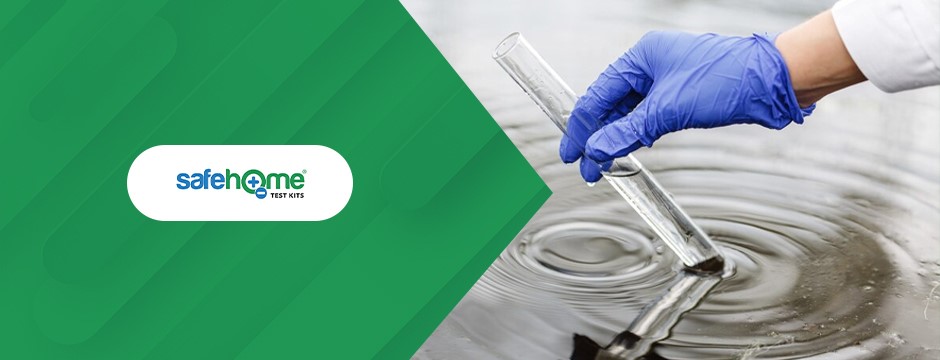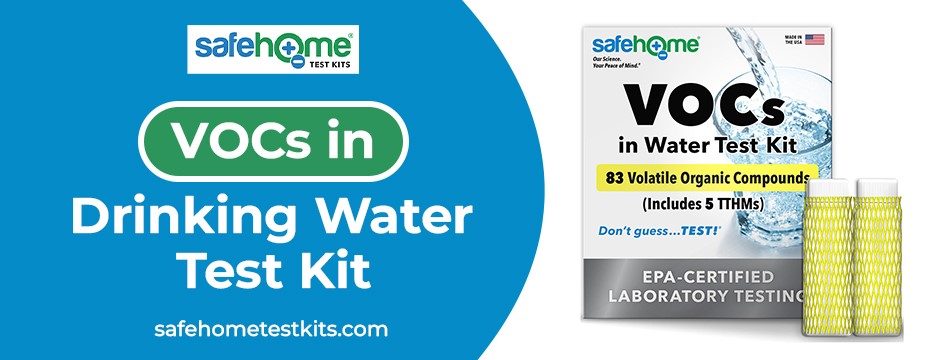Detecting Water Contaminants: What DIY Test Kits Can Reveal

Water, the elixir of life, flows from our taps, bringing hydration, cleanliness, and nourishment to our households. It’s a resource that we depend on daily, but how often do we consider the quality of the water that we consume and use in our homes? Water contaminants are a hidden threat that can compromise the health and safety of your family. Fortunately, you don’t need to be an expert to identify potential issues. DIY water test kits are accessible tools that can help you assess water quality in your home, providing valuable insights into the safety of your water supply. In this comprehensive guide, we’ll explore the importance of testing for water contaminants and how DIY test kits can empower you to ensure the purity and safety of your water.
Understanding the Importance of Water Quality
Water is an integral part of our daily lives, with applications ranging from drinking and cooking to bathing and cleaning. Ensuring that the water you use is safe and free from contaminants is essential for several reasons:
- Health and Well-Being: Contaminated water can lead to various health issues, from gastrointestinal problems to more severe conditions. It’s crucial to protect your family’s health by identifying and addressing water quality concerns.
- Environmental Impact: Water contaminants not only affect human health but also harm the environment. Properly treated and managed water resources are vital for ecosystem health and sustainability.
- Home Appliance Longevity: Water quality can impact the lifespan of your household appliances, including dishwashers, washing machines, and water heaters. Contaminants like hard water minerals can lead to scale buildup and reduce appliance efficiency.
- Taste and Odor: High-quality water enhances the taste of your food and beverages, making them more enjoyable. Foul odors and unpleasant tastes can be indicative of water quality issues.
Common Water Contaminants
Before delving into DIY water test kits, it’s important to understand the potential contaminants you may encounter in your water supply:
- Microorganisms: Bacteria, viruses, and parasites can make drinking water unsafe.
- Heavy Metals: Elements like lead, copper, and mercury can leach into the water supply from pipes or natural sources.
- Chemical Pollutants: Industrial and agricultural runoff can introduce chemicals like pesticides, herbicides, and industrial solvents into water sources.
- Sediment and Particles: Solid particles and sediments can cloud water and affect its quality.
- Chlorine and Chloramine: These chemicals are commonly added to disinfect water but can affect taste and odor.
- Hard Water Minerals: Calcium and magnesium can lead to scale buildup in pipes and appliances, affecting water flow and efficiency.
The Power of DIY Water Test Kits
DIY water test kits are user-friendly tools designed to detect a wide range of contaminants in your water supply. They empower you to take control of your water quality without needing specialized knowledge or expensive equipment. Here’s what you can expect from these kits:
- Easy Accessibility: DIY water test kits are available online and at many retail stores. You can purchase them without the need for a professional service.
- Affordability: These kits are cost-effective compared to hiring a water testing service. You can test your water as often as needed without breaking the bank.
- Convenience: Most DIY kits have clear instructions, making the testing process simple and convenient. You can perform the tests in the comfort of your home.
- Quick Results: DIY kits often provide rapid results, allowing you to gain insights into your water quality in minutes or a few days, depending on the specific test.
- Versatility: There are various DIY water test kits, each tailored to detect specific contaminants. You can choose the kit that aligns with your concerns, whether it’s microbial contaminants, heavy metals, or other water issues.
Common Types of DIY Water Test Kits
Let’s explore some of the most common types of DIY water test kits and the contaminants they can reveal:
- Bacteria and Pathogen Test Kits: These kits are designed to detect the presence of harmful microorganisms like E. coli, coliform bacteria, and other pathogens that can pose health risks.
- Lead Test Kits: Lead is a toxic heavy metal that can enter your water supply through old plumbing. Lead test kits reveal the presence of this harmful substance.
- Mineral and Hardness Test Kits: These kits assess the mineral content in your water, particularly calcium and magnesium, which contribute to water hardness. Hard water can lead to scale buildup in pipes and appliances.
- pH Test Kits: pH levels can impact the taste and safety of your water. pH test kits help you determine whether your water is acidic or alkaline.
- Chlorine and Chloramine Test Kits: These kits reveal the concentration of chlorine and chloramine in your water, which are commonly used for disinfection.
- Pesticide and Chemical Test Kits: Designed to detect the presence of harmful chemicals and pesticides in your water supply, especially in areas with agricultural or industrial activity.

How to Use DIY Water Test Kits
Using a DIY water test kit is a straightforward process. While specific instructions may vary depending on the kit you choose, here are the general steps:
- Collect a Water Sample: Follow the kit’s instructions to collect a sample of your tap water.
- Perform the Test: Use the components provided in the kit to conduct the test as directed. This may involve mixing reagents, adding drops of solution, or using test strips.
- Observe the Results: Wait for the specified amount of time for the test to develop, and then observe the results. Some tests provide immediate results, while others may require a waiting period.
- Interpret the Results: Compare the test results to the provided guidelines or color charts. This will help you determine the presence or concentration of contaminants in your water.
- Take Action: Based on the results, consider necessary steps to address water quality issues. This could include installing water filtration systems, contacting a professional for lead pipe replacement, or addressing other specific concerns.
The Benefits of DIY Water Testing
Embracing DIY water testing has several advantages:
- Regular Monitoring: DIY kits enable you to regularly monitor your water quality, ensuring that any changes or issues are promptly identified and addressed.
- Cost-Efficiency: DIY testing is budget-friendly, making it accessible to many households.
- Prompt Action: With rapid results, you can immediately act if contaminants are detected, safeguarding your family’s health.
- Customized Testing: You can choose specific kits tailored to your concerns, providing comprehensive insights into your water quality.
- Peace of Mind: DIY water testing offers peace of mind, knowing that you’re taking proactive steps to ensure the safety and quality of your water supply.
Evaluating VOCs in Drinking Water: A Comprehensive Solution
Regarding safeguarding your family’s health and well-being, the quality of your drinking water is a non-negotiable consideration. The Safe Home® VOCs in Drinking Water Test Kit is a comprehensive solution for assessing volatile organic compounds (VOCs) in your drinking water. This kit is designed to test water supplies exposed to volatile organic compounds resulting from industrial accidents, ensuring that your water remains safe, even in the face of environmental challenges.

Why VOC Testing Matters
Volatile organic compounds are a diverse group of chemicals that can find their way into water supplies through various means. This may include industrial accidents like train derailments, semi-tanker ruptures, on-site industry spills, etc. The potential health risks associated with VOCs, including substances like TTHMs and Vinyl Chloride, underscore the importance of thorough testing.
Take Control of Your Water Quality
Your family’s safety, as well as that of your animals, rests in your hands. Safe Home® is a renowned name in water testing, trusted by families nationwide. Get the Safe Home® VOCs in Drinking Water Test Kit today and empower yourself with the knowledge needed to make informed decisions about your water supply. By testing your water today, you gain valuable insights into the presence of volatile organic compounds, providing peace of mind and the assurance that your water is as pure as possible. Don’t compromise regarding your family’s well-being – trust Safe Home® for accurate, dependable, and comprehensive water testing solutions.
Conclusion: Taking Control of Your Water Quality
Ensuring the purity and safety of your water supply is not a luxury; it’s a fundamental necessity. DIY water test kits empower you to take control of your water quality, identify potential contaminants, and make informed decisions to protect your family’s health and well-being. Regular water testing provides peace of mind, knowing that the water you rely on for daily activities is safe and clean. Don’t wait until water quality issues become evident – invest in DIY water test kits and take the first step towards a healthier and safer home environment. Remember, when it comes to water quality, knowledge is power, and DIY test kits put that power in your hands.


